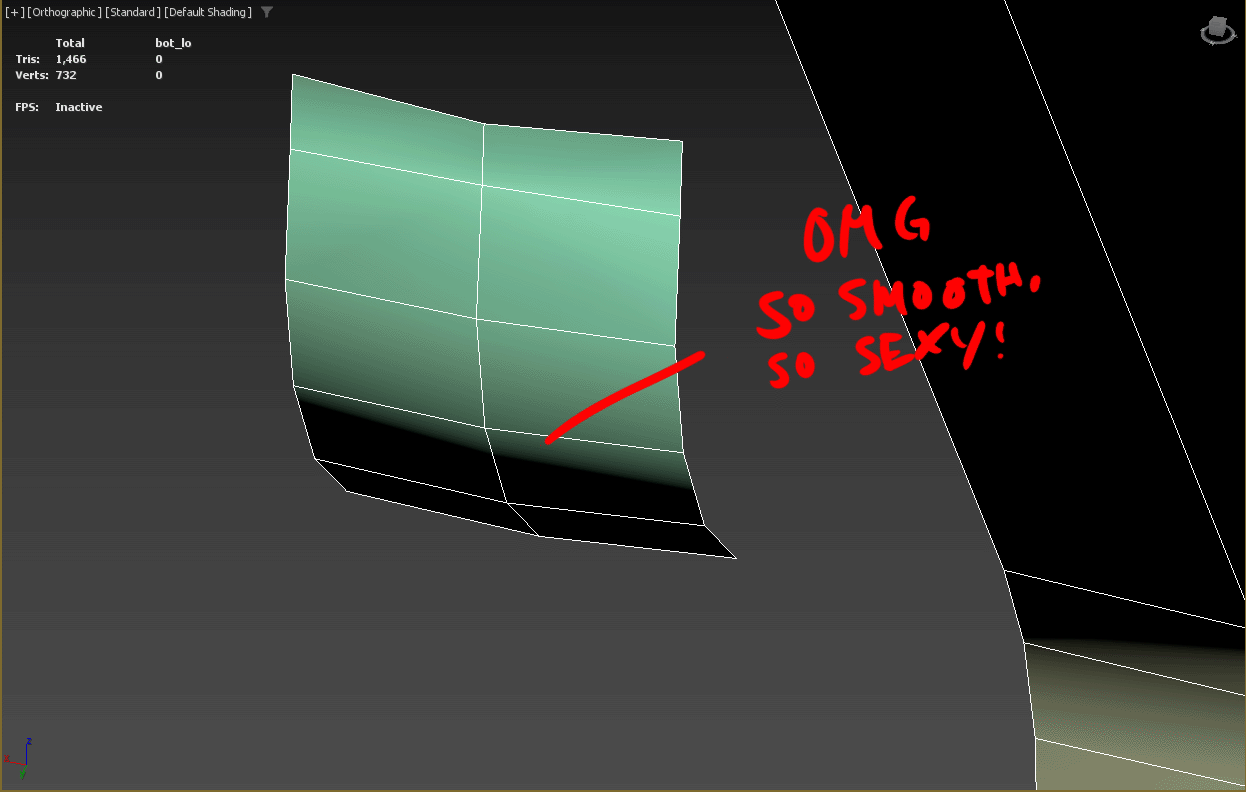The BRAWL² Tournament Challenge has been announced!
It starts May 12, and ends Oct 17. Let's see what you got!
https://polycount.com/discussion/237047/the-brawl²-tournament
It starts May 12, and ends Oct 17. Let's see what you got!
https://polycount.com/discussion/237047/the-brawl²-tournament
Fusion -> Max normals artefacts
Hi guys,
For a project I'm working on, I imported a model from Fusion to Max. I've done this workflow many times with Solidworks before so I'm in familiar territory so far. On this occasion, I'm converting to mesh on import as that gives me a water tight mesh, rather than welding the borders myself.
Anyway as part of the mesh clean up process I have to remove and weld various vertices (this is for a low poly game model). Now I'm aware that CAD files will have normals that are tweaked from their true values in some cases to get perfect looking surfaces. This usually occurs where one surface borders another, like on the interface between a flat surface and a fillet, the normal will be that of the flat surface (instead of averaging the flat and angled surface normals) to avoid shading the flat surface.
But... I've edited the vertices in the middle of surfaces that have compound curves, and I'm getting chunky artefacts in the shading. In the .gif below you can see the difference clearly between the unedited normals and the edited normals. Those edited normals are averaged between four faces, so as far as I can see they should be the same

In the second image you can see that the handles for the edited normals are a lot shorter. I can copy paste an unedited normal, but as soon as I rotate it, it shortens. If I select an unedited normal and click unify, it shortens. So somehow the normals coming in from the CAD file are "longer"...? And this somehow gives a super smooth sexy result... I'm just confused here.

Anyway all of this will be covered in a normal map so I don't know if it will matter, but I would like to get to the bottom of it.

Replies
normalised means the vector has a length of 1.
You saw that get fixed when you reset xform and the lengths all normalised -
that could mean that the object had a non-uniform scale on it somewhere in it's hierarchy but it could be to aid with clean looking rendering in the source application or even just a side effect of how the nurbs surface was converted to mesh.
Removing those values in 3ds Max is a good idea if you’re going to be editing the vertices before baking, since Max won’t be transforming any new normals in the same way.